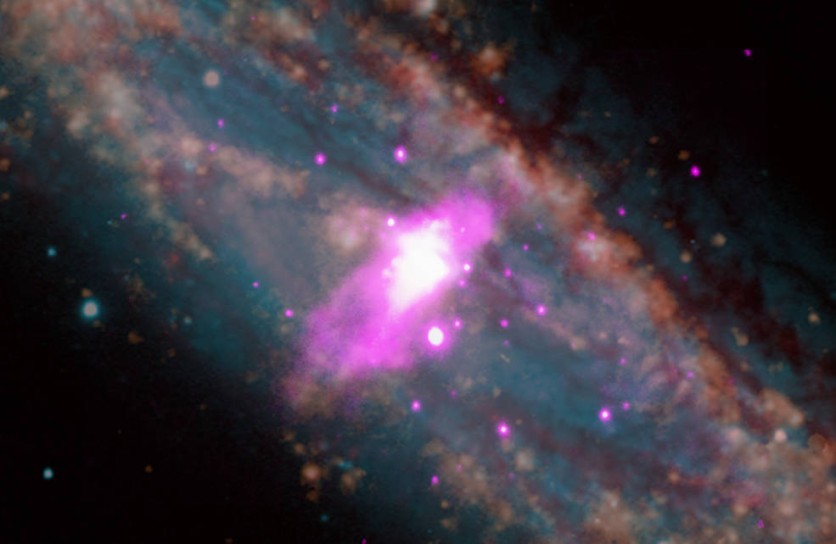NASA's Chandra X-ray Observatory has been used in a new study to explore the effects of powerful winds launched from the center of a nearby galaxy called NGC 253.
The galaxy is located 11.4 million light-years from Earth and is similar to our Milky Way in terms of being a spiral galaxy. However, stars in NGC 253 are forming much more quickly, about two to three times faster, than in our galaxy.

Powerful Galactic Wind
The study, conducted by a team led by Sebastian Lopez of The Ohio State University, used deep Chandra observations taken over four days to investigate the properties of the wind.
The researchers found that this galactic wind is composed of gas with temperatures of millions of degrees that glows in X-rays. An amount of hot gas equivalent to about two million Earth masses is blown away from the galaxy's center every year, as a result of the wind.
NGC 253 is an essential galaxy to study since it provides astronomers with a keyhole through which they can explore a crucial phase in the stellar life cycle, according to NASA.
Young stars in the galaxy, which are responsible for generating powerful winds, send material into intergalactic space enriched with elements forged in their interior, which include those responsible for life on Earth. These elements are then incorporated into the next generations of stars and planets.
Super Star Clusters
A new composite image of NGC 253 shows that the winds from the galaxy blow in two opposite directions away from the center of the galaxy, to the upper right and lower left.
The image, which includes visible light data, emission from hydrogen, and infrared data, also highlights that the galaxy appears almost edge-on from Earth's vantage point.
Recent theoretical work predicts that a more focused wind is formed by a ring of "super star clusters" situated near the center of NGC 253, which brims with millions of young, massive stars.
The wind is plowing up cooler gas, which causes it to slow down and cool, according to the team's measurements, which also show that the wind rapidly cools as it moves away from the galaxy's center.
Wind Plow Effect
This "wind plow" effect might represent the extra physics necessary to improve the concordance between theory and data.
Finally, the researchers investigated the chemical makeup of the wind, including the distribution of elements like oxygen, neon, magnesium, silicon, sulfur, and iron.
They found that these elements become significantly more diluted as one moves further away from the galaxy's center. Nevertheless, there was no comparable sharp reduction in the quantities of these components in the wind from M82, another well-studied galaxy that is undergoing a starburst.
Further research on additional galaxies with winds will be necessary to ascertain whether this difference is related to the general properties of the galaxies, such as the overall mass of the stars they contain, according to NASA.
The results of this study provide a fresh perspective on how strong winds affect a galaxy's ecology and ecosystem on much larger and more dramatic dimensions than we see on Earth.
The team's findings were published in The Astrophysical Journal.
Related Article : NASA's Chandra X-ray Eyes 2 Supermassive Black Holes on Collision Course

ⓒ 2025 TECHTIMES.com All rights reserved. Do not reproduce without permission.




